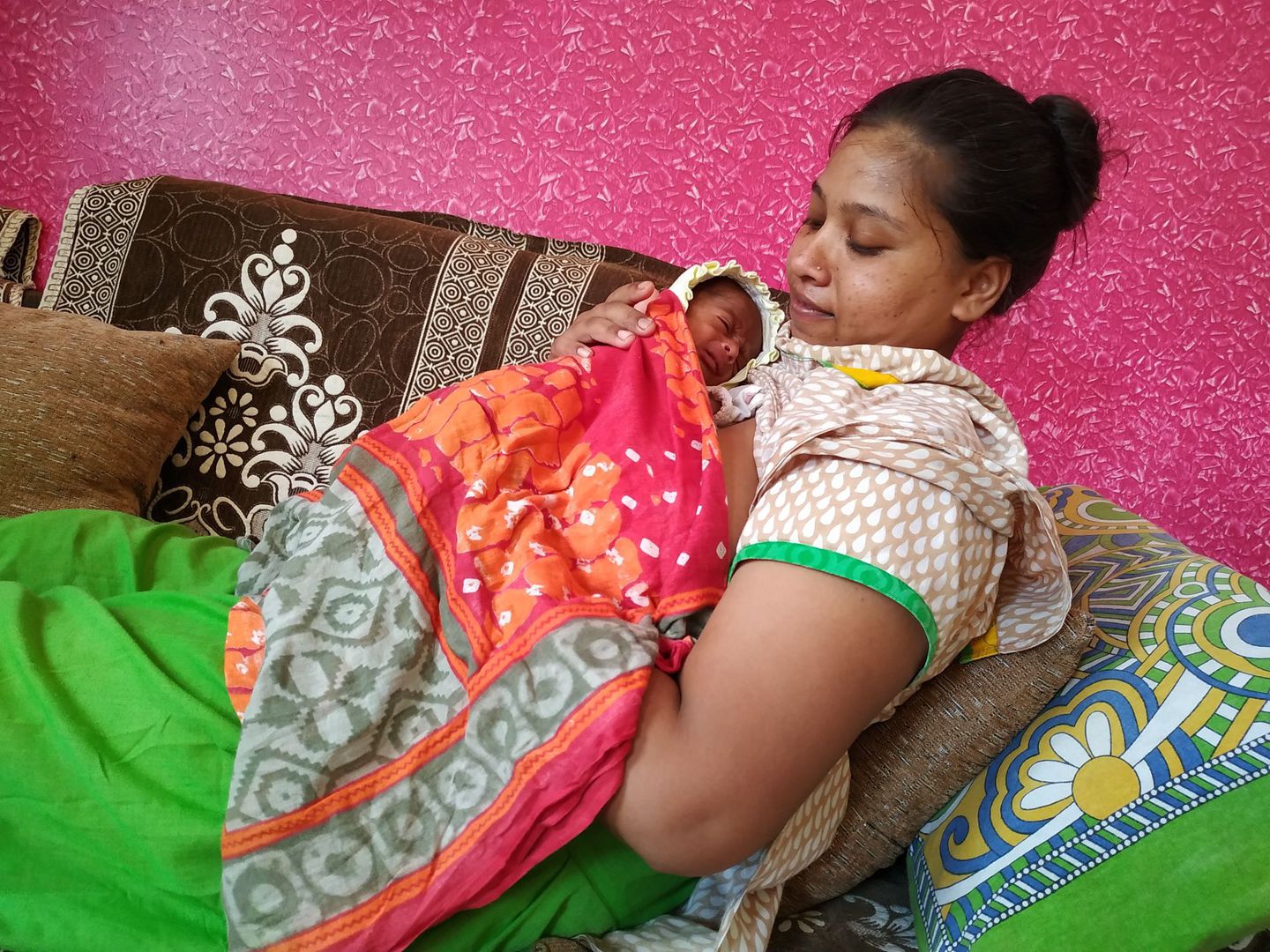News
Canada announces historic investment in the global fight against malnutrition
February 6, 2025
WP_Term Object
(
[term_id] => 49
[name] => Field Stories
[slug] => all-field-stories
[term_group] => 0
[term_taxonomy_id] => 49
[taxonomy] => news-category
[description] => Discover the personal stories of people whose lives have been impacted by better nutrition, and those working tirelessly to deliver it.
[parent] => 0
[count] => 180
[filter] => raw
)
With breastfeeding and kangaroo mother care, baby Prapti gets a healthier start to life
In the village of Gayag, in Gujarat, India, 27-year-old Ilaben endured a difficult pregnancy before giving birth to her daughter, Prapti. Delivered early (pre-term) by caesarean-section, Prapti had a very low birthweight of only 1,380 grams and spent her first days in the neonatal intensive care unit. In the hospital she was tube-fed formula milk for two weeks, until she had gained enough weight to be taken home.
Posted on August 6, 2020

In the village of Gayag, in Gujarat, India, 27-year-old Ilaben endured a difficult pregnancy before giving birth to her daughter, Prapti. Delivered early (pre-term) by caesarean-section, Prapti had a very low birthweight of only 1,380 grams and spent her first days in the neonatal intensive care unit. In the hospital she was tube-fed formula milk for two weeks, until she had gained enough weight to be taken home.
While the family was happy to have the new baby at home, they faced immediate challenges. Prapti was irritable and would not latch on to her mother’s breast. Unable to get her daughter to breastfeed, Ilaben was anxious, knowing that without the right nutrition the baby’s weight would drop. She had not been provided with information and support on how to feed her small baby.
In India, neonatal deaths contribute to 50 percent of deaths among children under five1. With gaps in infrastructure accessibility and delivery, increasing public information about home-based practices can save lives and improve the health of newborns this includes initiating breastfeeding within the first hour of life (early initiation of breastfeeding), feeding only breastmilk for the first six months (exclusive breastfeeding), and kangaroo mother care (KMC) for babies born too early (preterm) and too small (low birthweight). KMC is a proven practice that involves holding the baby skin-to-skin on the mother’s or other family member’s chest —ideally feeding them only breastmilk — and having close follow up of the mother and baby once they return home. These infant and young child nutrition (IYCN) practices provide essential health and nutrition, but most families are unaware of these practices and their benefits.
Ilaben and her family were soon visited by Jyotiben, the village ASHA, or community health worker. Having been trained by Nutrition International on KMC and home-based IYCN according to national guidelines, she was able to counsel the new mother. She emphasized the importance of feeding only breastmilk and taught her how to practice KMC, explaining how it helps to stabilize the baby’s heart rate, breathing and temperature, improves breastfeeding and promotes improved growth, reduced risk of infections and a stronger bond between the baby and its family.
This new information, counselling and support renewed Ilaben’s confidence in her ability to care for her child. She began practicing KMC and breastfeeding Prapti. However, fearing that her breastmilk would be insufficient, she supplemented it with powdered milk. Concerned about this practice, the ASHA asked Nutrition International’s block coordinator for assistance.
The block coordinator joined Jyotiben on a visit to the family. After observing their routine, she encouraged Ilaben to discontinue supplemental feeding and only breastfeed the child. She also advised her to increase the amount of time the baby was held skin-to-skin, ensuring continuous skin to skin as much as possible. When Prapti was six weeks old, the block coordinator and ASHA visited the family again. This time, they were happy to see that that not only had the amount of time spent skin-to-skin had increased, but that Ilaben’s husband was also now practicing KMC with the baby. After diligently following the IYCN practices they had learned, the family was thankful that their daughter had started to gain weight.
“Until the age of six months, I will only provide my breast milk to Prapti,” said Ilaben. “Only after six months will I introduce other healthy foods, while continuing to breastfeed.”
With guidance from the local ASHA and support from Nutrition International, the family was able to give Prapti the nutrition and care she needed to gain weight, ensuring she had a healthier start to life and a chance to reach her full potential.
References
1 National, regional, and state-level all-cause and cause-specific under-5 mortality in India in 2000–15: a systematic analysis with implications for the Sustainable Development Goals (published in The Lancet Journal in 2019)